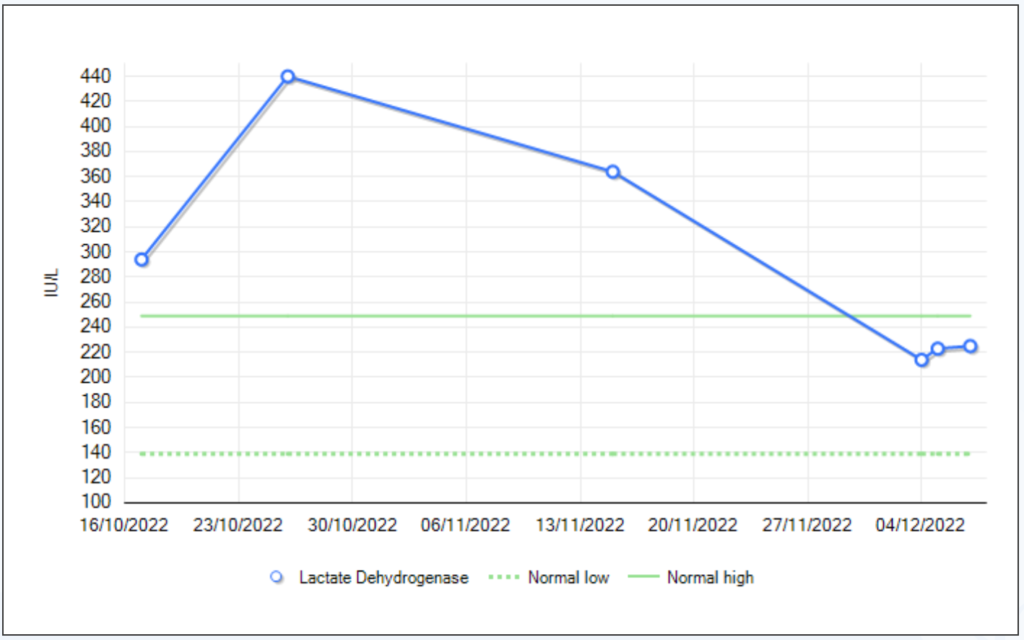As a lymphoma patient, you have lots (and I mean lots) of blood tests. Usually at least weekly while you are being treated. These are the principal method that the haematology docs use to see how you’re doing. Every clinic visit I had involved blood tests. When I was an in-patient, blood would be taken at 6 am every morning, so that the results were back for the doctor’s rounds in the late morning.
At my hospital, the results from the tests usually came back within a couple of hours. It wasn’t uncommon for me to have my blood taken in the morning, go home, and be called back to the hospital in the afternoon because something wasn’t right. Thankfully, I only live 10 minutes from the hospital, if you’re further away you might have to wait in the hospital for the blood results to come back.
Blood tests are made a lot easier if you have a PICC or central line fitted as they can usually take them from the line, which means fewer needles. However, sometimes, even with a line they’ll need to take “peripheral bloods” (i.e. from a vein instead of your line).
`Here are some of the key measurements about lymphoma blood tests that you may hear from your haematologist :
Red blood cells (Haemoglobin/ Hb)
These carry oxygen around your body and low levels are referred to as anaemia. Both chemo and the lymphoma itself can cause anaemia, which makes you feel awful and very tired. The normal Hb range for men is 130 to 180 grams per litre (g/l) and 115 to 165g/l for women1Macmillian | Blood tests.
When my Hb went low I was often treated with blood transfusions. This is a painless process taking about 2-3 hours per bag of blood.
Neutrophils
Neutrophils are infection-fighting cells, these often drop a few days after having chemo. Low levels of neutrophils (known as neutropenia) can leave you susceptible to infection, so I was given G-CSF injections to take at home. It’s not nice to have to inject yourself, but you get used to it. Normal levels of neutrophils are 2.0 to 7.5.
Platelets
Platelets help your blood clot. Normal levels are 150 to 400. Low levels of platelets are known as thrombocytopenia.
I would usually know how my platelets were doing by my nose. Whenever my platelets dropped, I’d start getting nosebleeds. When my levels dropped below 75 I was given a platelet transfusion, a painless procedure taking about an hour. For me, the R-GDP chemo caused my platelets to drop quite low, this delayed the installation of my central line as it was dangerous to have an invasive procedure without enough platelets.
C-reactive protein (CRP)
This is an indication of the level of inflammation in the body. An increased CRP can mean you have an infection somewhere. I twice had elevated CRP and both times I was admitted to the hospital for treatment with IV antibiotics.
If you have high CRP markers, it’s common for the nurses to take blood cultures, this is where a sample of your blood is put into a couple of little bottles filled with a growth substance, and the lab then monitors this for a few days to see if any bacteria or other pathogens grow in it.
Lactate dehydrogenase (LDH)

LDH is an enzyme that is produced when tissue is damaged. It can be used as an indicator of the presence and level of lymphoma. There are many other things that can cause high LDH though.2Lab Tests Online UK | Lactate dehydrogenase (LDH)
References
- 1
- 2